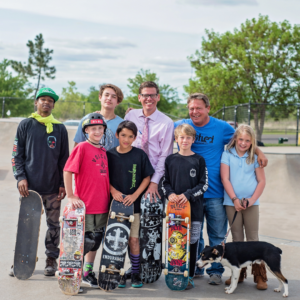COL: Golf in the Rough
Edmond is known for its proliferation of professional golfers, such as tour fixture Bob Tway and up-and-coming tour golfer Charles Howell III. In our leafy suburban community, golf is a cultural norm, even recently hosting PGA events.
While sitting in sunny San Diego at the American Real Estate Society conference hearing researchers report on the state of communities built around golf courses, I listened with renewed interest. Afterwards, I was watching the Masters Tournament, contemplating the future of golf, and the closing of the Coffee Creek public golf course.
Developers build golf courses because they can purchase land for as little as $500/acre, build a golf course and create housing projects that are worth $80,000/acre. This impressive financial incentive created a boom from 1986 to 2005 with 5,000 new golf courses built, accounting for 44 percent of the golf course stock. Seventy percent of those courses were linked to master planned communities, such as Coffee Creek in Edmond.
Starting in 2006, we started seeing a fundamental change in the success of golf, golf courses, and golf-course based real estate communities. From 2006 to 2016, 1,500 golf courses closed, which accounts for a 5.9 percent decrease in golf courses nationwide. These were primarily what we refer to as “value” courses, like Coffee Creek in Edmond. In 2016, we saw 212 courses closed and only 15 openings in the U.S.
Research shows that golf, as a sport or activity, is declining in popularity. Experts claim this decline is partly due to golf courses being built by developers to sell real estate lots during the boom from 1986 to 2005, and not by the golfing industry. The courses built were too difficult and only 30 percent of the residents of those communities actually played golf. At that time, being affiliated with a golf course increased the value of a lot anywhere between 4 to 12 percent, depending upon proximity to the course.
Last year, the U.S. saw a reduction in the number of golfers from 30 to 24 million, and the average age is at an all-time high of 52 years old. To stop this tailspin, the golfing industry will need to reinvent itself and get millennials interested in the sport. Until the popularity increases, golf-based real estate communities will continue to struggle and more courses will close, decreasing property values for those who purchased in these communities.
Dr. J. David Chapman is an Associate Professor of Finance & Real Estate at UCO (jchapman7@uco.edu).




